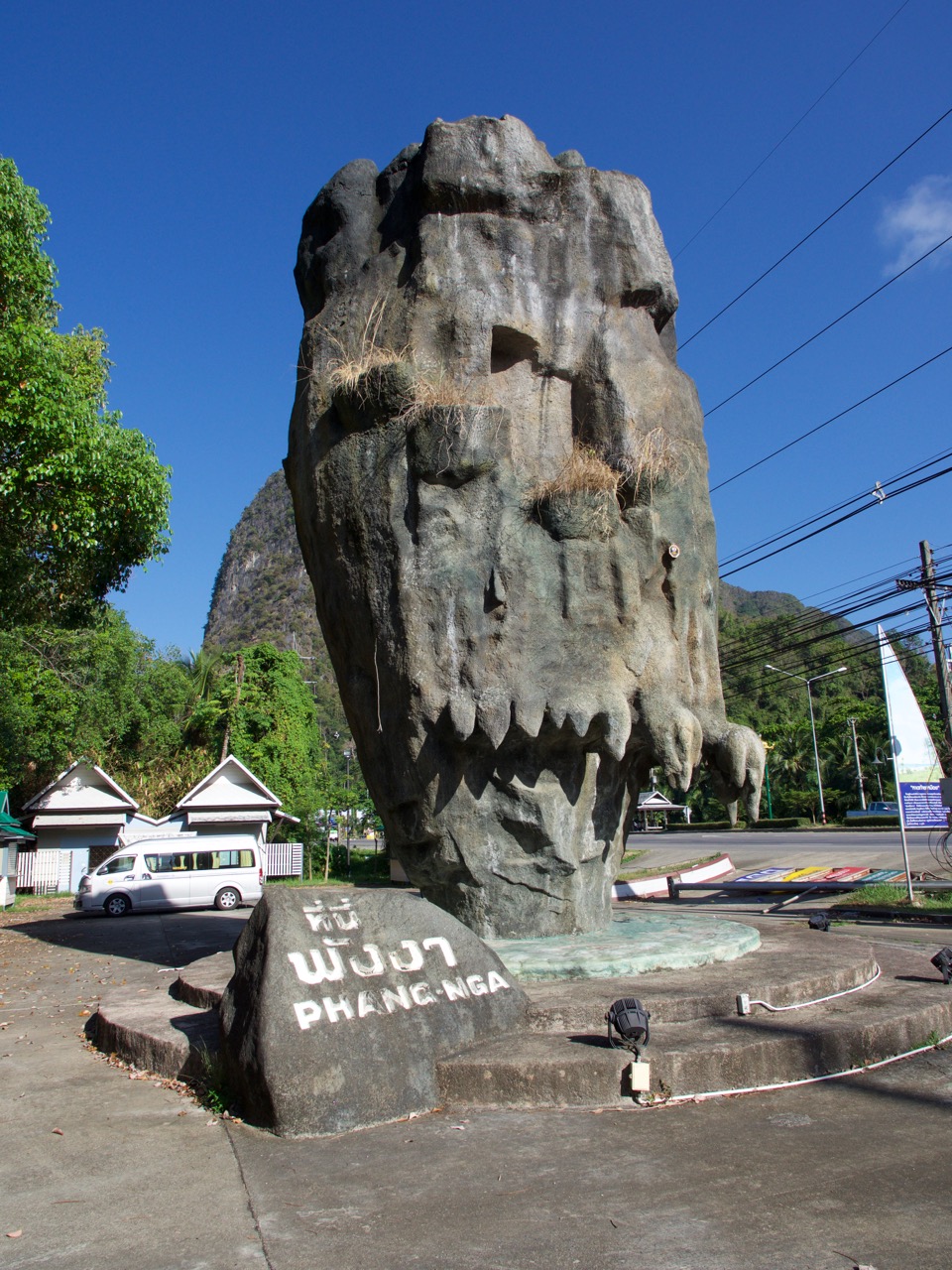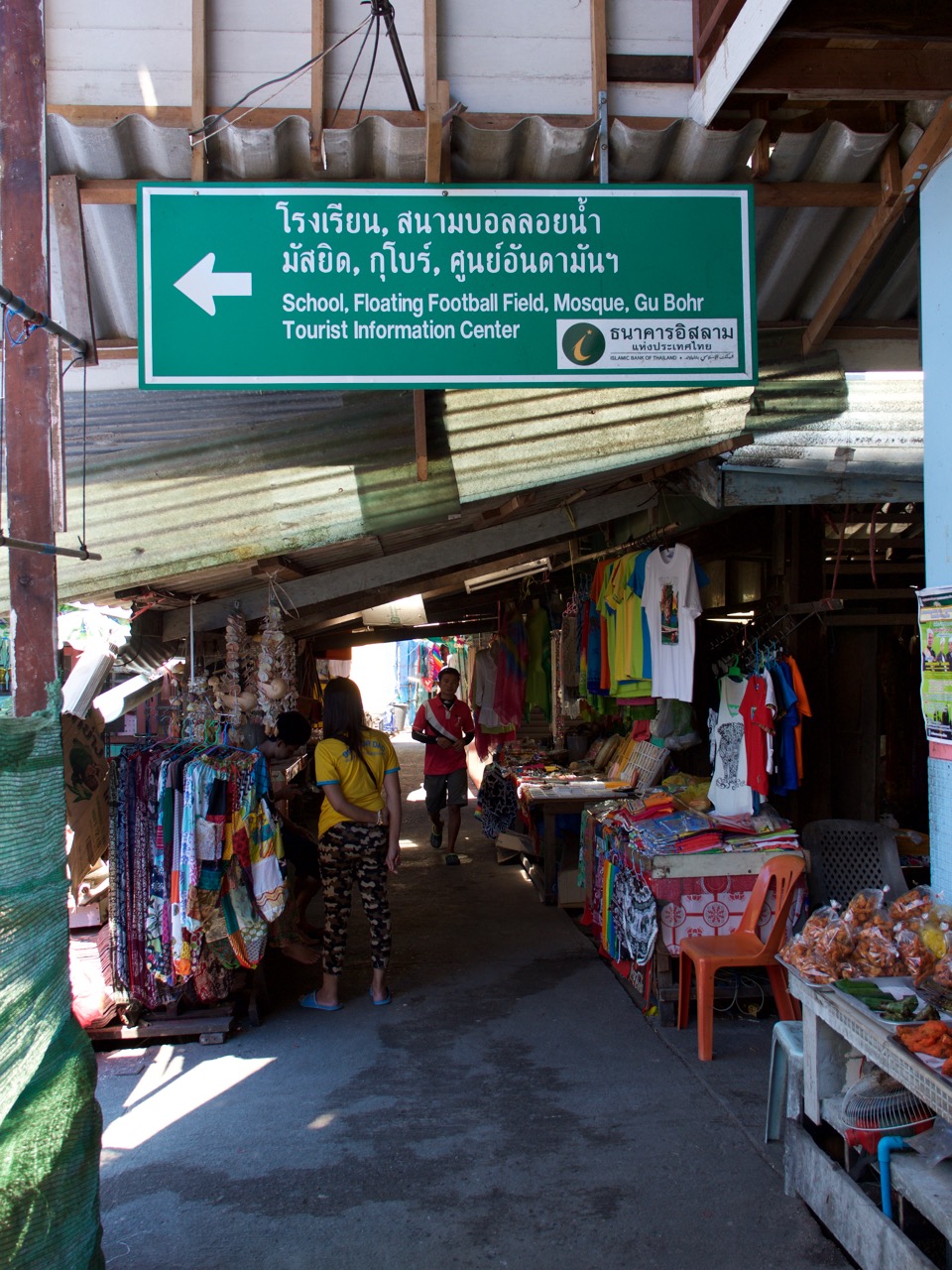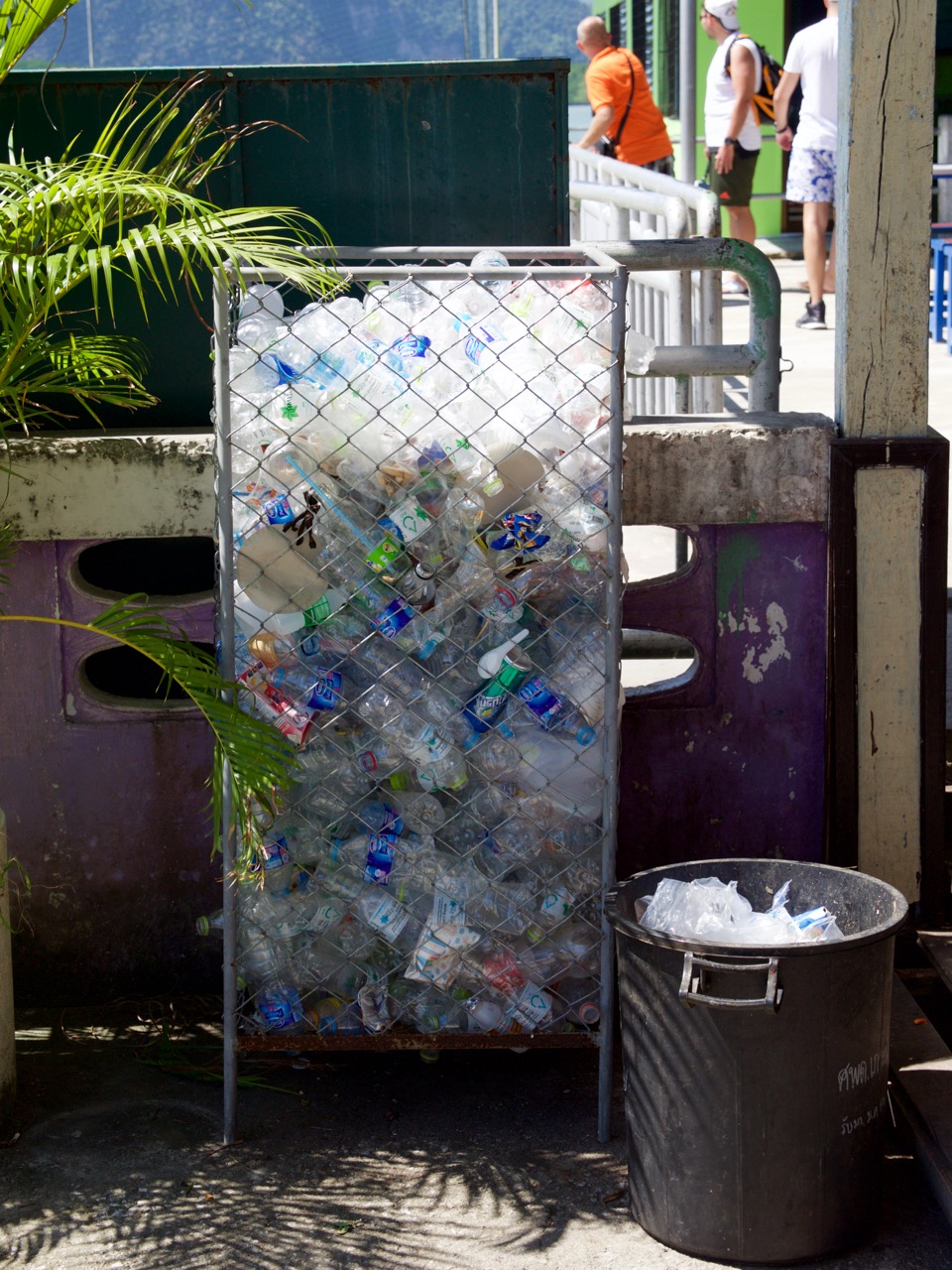First, catch up on the first half of our trip to Phuket, Thailand here.
The second “half” of the trip was just two days, and then we flew out on the third day.
Birding Before Bond
Tuesday January 12, we signed up for a private guided tour to James Bond Island and other stops in the area. The company I hired was Easy Day Phuket, based on great reviews I’d read online.
The guide, a young woman named Ben met us in the hotel lobby at 6:00am. We were getting an extra early start in order to have a better chance of seeing some birds along the way, plus hopefully beating some of the crowds. The driver was named Pong. I’m guessing both the names are spelled different than that, but that’s what they sounded like to me, and I didn’t ask them to write them out, because really, what’s the point? To write them correctly would mean using the Thai alphabet, which I can’t read anyhow. So anything written using the Latin alphabet (what most of us incorrectly think of as the English alphabet) would just be a transliteration anyhow.
Ben and Pong had a big Toyota van for us, the same kind that we rode in to get to our hotel from the airport. Here in Phuket, everyone has those vans. It was overkill for just two guests and hardly any gear, but I guess it’s easier for them to use a big van for all trips rather than a car for some trips and a van for others. Anyhow, the plan was to drive about 90 minutes north, do some birding by land, and then switch into what is called a long tail boat for the trip to the islands.
We stopped midway for some breakfast at a set of roadside stands, and Ben helped us choose what to order. In fact, she paid for it all, which was a surprise. But the trip itself cost so much money that I guess they can afford to pick up the cost of breakfast, lunch, and snacks along the way.
A ways after going through the airport area in the norther part of the island of Phuket, we went over a bridge that connects Phuket with Phang Nga province. It was hard for us to say Phang Nga at first, but once I stopped thinking about how it’s spelled and imagined it a different way it was much easier: PAN-yaw. There’s a little subtlety to it that I’m losing, but “PAN-yaw” is pretty darn close, at least to my ears.
The first place we looked for birds was at the national park headquarters not far from the boat dock where our long tail boat would later be picking us up. There was once a boardwalk through the mangroves there, but termites ate all the boards. So they replaced it with a concrete walkway, but at some point the concrete bridge over a creek collapsed and they never fixed it. So we could only access about 1/10 of the path, and the birding wasn’t very good.



We then moved on to a nearby park where there were no people. It did have a walkway that was intact, but no birds at all.



So we soon left, and went to a third park to attempt to see birds. This one had some monkeys and some sort of shrine and landscaping. There were some birds there, but not a lot and we didn’t stay long, because then it was time to continue on.





James Bond Island and the Nearby Attractions
We drove back to the national park headquarters and met up with the boat. It was a nice long tail boat, way more comfortable than the boat we sat in for the tour of the riverfront in Kumai on Kalimantan, Indonesia. The seats had cushions, which were the life jackets. And best of all there was an awning over our heads so we were in the shade. Shade plus breeze equals happy Todd in the tropics. And there was certainly a good breeze once the boat got up to speed.
On the way out toward James Bond Island, the boat captain took us slowly along the mangrove trees at first, so we could search for birds. But once it was clear we weren’t going to spot anything, we sped up.
Let me explain a little about James Bond Island. This area of Thailand has thousands of little limestone islands. They haven’t weathered all that much over the millennia and jut up out of the Andaman Sea. Trees grow on them, but for the most part there are no people because there are no flat parts to build on. Some of these remote islands were used in the James Bond film “The Man with the Golden Gun” from 1974. And this one tiny island in particular, called “The Nail”, was where the villian Scaramanga’s space laser was hidden. After the movie came out, Westerners who had seen the film started visiting, and over the last 40 years a tourism industry has built up around this.


Now, even the locals call this island “James Bond Island” because of its brand name recognition, and tours are advertised all over to go visit it. The island is covered with tourist shops selling the usual tourist junk, t-shirts, trinkets, hats, sunglasses, etc.

A nearby Muslim community that’s been there 300 years gets much of its income from either feeding the hungry tourists or paddling them around on sea kayaks or driving the long tail boats to take tourists out to the island. It’s pretty grotesque, but if you want to see the place from that James Bond movie, you gotta go.





After a half hour on the island viewing The Nail from a few angles and dodging Russians on the narrow footpath, we got back in the boat and headed for lunch at the aforementioned floating Muslim village.
Did I already explain long tail boats? I don’t think I did. Long tail boats are a type of watercraft I’ve only seen in Thailand. It’s a long and narrow wooden boat with benches. The captain sits in the back of the boat in front of a large gasoline engine that spins a long shaft attached to a propeller. On the other end of the engine is a long handle with the engine controls. The engine is balanced on a pivot mount so the captain can easily move the drive shaft in and out of the water, or push or pull it in either direction. This way, he can provide both thrust and direction to the boat. The “long tail” refers to the drive shaft that connects the engine to the prop. I’ve seen these boats range from small size that might only carry two or three people to very large ones that could carry twenty to thirty. These are common on the Chao Phraya, the river that Bangkok is built around. But they’re also used here at the coast. Here is a photo showing a medium size long tail boat. I took this at James Bond Island. See how the long tail is designed so the captain can point the propellor in a more than 90 degree arc? He can also reverse the engine, so the boats are pretty maneuverable.

On the way to the Muslim village for lunch, we passed by an area where many tourists stop for some canoeing through sea caves. If you want to do this, it’s an extra 400 baht per person. That gets you an open topped inflatable kayak and a person to paddle it. You don’t have to do the paddling yourself, nor are you allowed to. That’s the job of the paddlers, who are men from the Muslim village, we later learned. Besides, the sea caves are too dangerous for inexperienced kayakers to do on their own, supposedly. They don’t want people running the inflatable kayaks into the sharp limestone outcroppings.



Koh Panyee
Koh Panyee (also sometimes spelled Koh Panyi) is the village of Muslim fisher folk. It’s a bit weird to see this island among all the other islands out here with a village built on stilts next to it, and a mosque (masjid) with golden onion domes on one side.



According to our guide, a bunch of Muslims came here from Indonesia about 300 years ago and created this settlement. Now this area is part of Thailand, so they speak Thai. But they and many of the people of this province are Muslim, even though the king and most people in Thailand are Buddhists.
The lunch restaurant has a simplified but strange approach. They serve several dishes, and every table gets the same things. So they never ask you want you want or don’t want. They just bring about six different plates of food, in quantities so large that the group could never even think about having seconds. It’s really weird, because there is no interaction with the waitstaff. Nobody gives you a menu, asks you what you want, asks you if there’s anything else you’d like, and so on. You just come in and sit down, they see how many people are at the table, and then you wait. In our case, the wait was uncomfortably long, as if they were ignoring us or we were invisible. But eventually three or four young Muslim women materialized with tons of food all delivered to the table simultaneously. There’s no way we could eat even half of it. I guess our guide Ben took care of paying for it, because when we were finished we just walked off.
After lunch, we walked through the village. Years ago, this probably felt like a real tour of a village. But nowadays, there are tables and stalls set up everywhere along the one path that everyone takes. It’s literally non-stop shopping, with postcards, clothes, trinkets, food items like dried fish, and snacks. And then near the end of the trek through this weird market area, we visited the town’s school, which was even weirder.


While the children were trying to take classes – or, in the case of the kindergarteners, take their afternoon naps – a steady stream of tourists flows by, peeking in each doorway, talking, and taking photos. This sounds incredibly distracting to me, and I asked our tour guide about it. How are the kids supposed to learn anything with all this commotion? She couldn’t really explain it either, and agreed that it might be better to have the older kids use the classrooms on the tourist path, and put the younger kids in the other classrooms. Personally, I think they should just keep the tourist path out of the school altogether, but I guess they want the tourists to see that they’re really doing education here.


We didn’t get a similar walk by the mosque I mentioned. That’s notably not on the tourist path, and that’s probably a good thing, because a lot of the tourists on this conga line through the village were wearing nothing more but bikinis (usually with at least a tiny cover-up over the butt) and flip-flops. It was a huge contrast between the Russian tourists in their sunbathing attire and the locals who wear long pants, modest shirts, and often head coverings. Sadly I didn’t get any photos to show this.


Back to Land
After leaving the Muslim village, we continued back toward the national park headquarters in our long tail boat. We stopped briefly to see some rock art in an alcove. Our guide said these paintings were made 3000 years ago.

We also passed the only hotel in the area. It doesn’t look very nice from the outside. I don’t know how it looks inside. If you wanted to stay as close to the Phang Nga Bay as possible, this would be the place.


Buddha Cave Temple
It was starting to get late in the day. Well, not really late late, but given that we only paid for nine hours of touring and we still had a 90 minute drive to get back to the hotel, we didn’t have much more time. So we only did one more thing, and that was a short side trip to Wat Suwannakuha, also called the Buddha Cave Temple. Many people call this the “monkey temple” but there weren’t many monkeys in the area when we were there, and none near the entrance to the cave. One theory on TripAdvisor is that rabies swept through the monkey population a few years ago, and now many of them are dead. That’s probably a good thing.
The entrance fee was only 20 baht, which was nice. Our guide just paid for us and dropped us off to go see it on our own. Inside are some Buddha statues, including one large reclining Buddha. There are also some statues of the guy who originally started meditating here because it was so quiet.
At one point, the caves go up. We climbed up the makeshift stairs a ways, but the last little bit looked too steep to do in flip flops with a big camera hanging around my neck, so we came back down.
The photo below shows one of the rock walls in the cave. I thought the irony was sweet. There’s a sign that says “Don’t write anything on the rock, please.” And it says it in Thai and English. But nearly all the graffiti you can read is in Russian.
So there are two possibilities:
- Maybe a bunch of Russian tourists filled the wall with graffiti. And then the national park service came along and made a sign asking people to not do that. But instead of writing the sign in Russian, they did it in English and Thai, languages that the rude Russian tourists may or may not understand.
- The other possibility is that maybe the sign came first, and the Russian tourists, unable to read and obey instructions in either Thai or English, wrote graffiti on this tempting wall because they couldn’t read the sign.
Either way is a weird reflection on human nature. And either way, Russian tourists suck. Why would you go into a Buddhist shrine in someone else’s country and write graffiti on the walls? Do they really think this is appropriate, or do they just not give a damn? I think I’ll write more on my experiences in Phuket with Russian tourists later.
Once we finished up inside the cave, we settled back into our van for the long journey back to our hotel. Beth and I both napped a bit on the way, I paid the remainder of what I owed the tour company, and we said our goodbyes.
I hope Ben and Pong got home before too late, since we kept them an hour later than planned.










1 comment